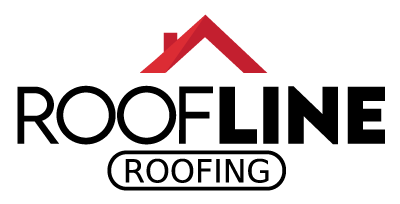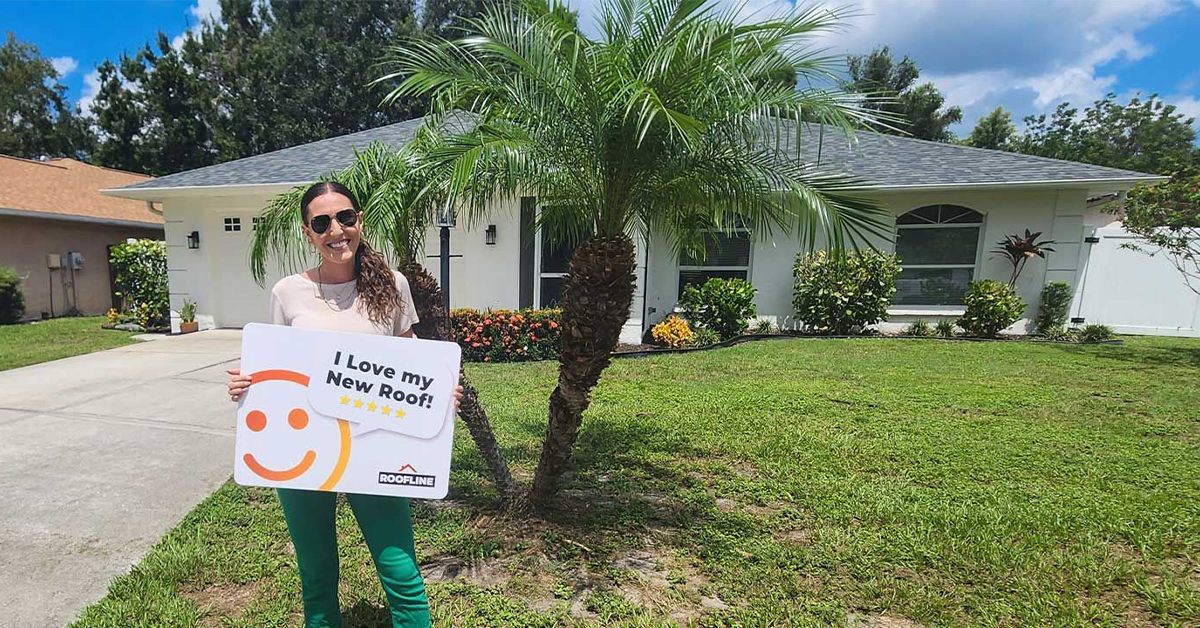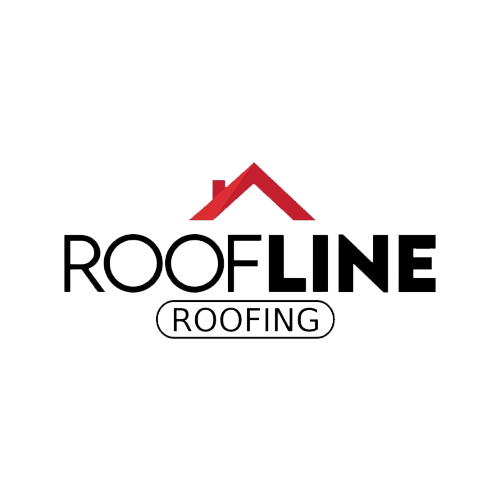
Choosing the right roof color isn’t solely about curb appeal; it involves strategic decisions that significantly influence your property’s energy efficiency and cost-effectiveness. In regions like Manatee County, where warm temperatures prevail, the color of your roof can dramatically impact your cooling expenses and energy consumption. Lighter hues, such as white and light gray, reflect a considerable portion of solar energy, reducing heat absorption and easing the demand on air conditioning systems. This not only translates into substantial savings on utility bills but also lowers the environmental footprint by lessening energy demands.
Moreover, understanding terms like the Solar Reflectance Index (SRI) is essential when selecting roofing materials. This index measures a material’s capacity to reject solar heat, playing a crucial role in maximizing thermal efficiency. As property owners in Sarasota and surrounding areas consider roof color, it’s vital to balance aesthetics with these functional benefits. By carefully considering factors such as local climate, building design, and environmental integration, homeowners can ensure a choice that delivers on both visual and practical levels, supporting long-term savings and environmental sustainability.
Color Science: How Roof Color Influences Heat Absorption
When you think about roofing, style and durability might come to mind first. However, the color of your roof plays a crucial role in energy efficiency, especially in places with warm climates like Manatee County, Florida. Choosing the right roof color can significantly impact how much heat your property absorbs, thereby affecting cooling costs and environmental footprint.
Understanding Heat Absorption
Different colors absorb varying amounts of heat. Dark-colored roofs tend to absorb more heat than lighter colors. According to the U.S. Department of Energy, dark roofs can reach temperatures of up to 150°F or more on a hot, sunny day. This can lead to increased cooling costs as the absorbed heat eventually filters into the building below.
Conversely, lighter-colored roofs reflect more sunlight and absorb less heat, keeping the surface up to 50-60°F cooler than their darker counterparts. Materials and coatings that reflect solar energy are known as “cool roofs,” and they play a significant role in reducing energy consumption.
The Science of Roof Colors
Light colors reflect heat better, which keeps buildings cooler. For example, a white or light gray roof reflects the most sunlight. These colors are particularly suitable for energy-saving purposes in climates like Manatee County. Lighter colors can reflect 35-80% of solar energy. Each color has a Solar Reflectance Index (SRI) that measures its ability to reflect solar energy. The higher the SRI, the better the material is at reflecting heat.
Impact on Energy Efficiency in Homes
The U.S. Environmental Protection Agency reports that roofs account for roughly 25% of a building’s cooling needs. A cooler roof can lower energy bills by decreasing the workload on air conditioning systems. For example, the Florida Solar Energy Center suggests that reflective roof coatings can reduce roof temperatures by as much as 50°F, leading to a drop in cooling costs by 20% or more.
When homeowners in Manatee County choose a lighter roof color, they not only save on utility bills but also reduce the demand on power grids during peak usage times, contributing to an overall decrease in energy consumption.
Applying the Knowledge: Practical Tips
1. Color Selection Based on Climate: For those in hot climates, lighter shades such as white, light gray, and tans are ideal. These maximize reflection and minimize absorption. A study by Lawrence Berkeley National Laboratory found that cool-colored roofs can decrease air conditioning demand by up to 20% in buildings.
2. Material and Coating Choice: Reflective coatings or materials designed to deflect solar energy can enhance energy savings. Coated asphalt shingles or metal roofs with reflective paint are effective options for keeping buildings cooler.
3. Consideration of Roof Pitch: The steepness of the roof isn’t just structural—it also affects heat absorption. Steeper roofs have less surface area affected by direct sunlight. Using reflective coatings can further counteract the solar energy absorbed by steeper roofs.
4. Local Regulations and Incentives: Explore local government rebates or incentives for utilizing energy-efficient roofing. Manatee County may offer tax incentives or grants for homeowners who opt for roofs that lower energy consumption.
5. Long-term Environmental Impact: Choosing the right roof color isn’t just about saving money. It’s also a way to reduce carbon footprints. The reduction in energy use results in less power generation and, consequently, fewer greenhouse gas emissions.
Understanding how roof color influences energy efficiency can greatly benefit residential and commercial property owners. By selecting the appropriate color and materials, you can significantly cut down on energy costs, reduce building temperatures, and contribute to a more sustainable environment in Manatee County. This knowledge empowers property owners to make choices that offer both financial savings and environmental benefits, making a considerable difference one roof at a time.
Energy Savings: Assessing the Financial Benefits
Energy savings go beyond simply reducing monthly utility bills; they translate into substantial long-term financial advantages. When property owners invest in energy-efficient roofing solutions, like those emphasizing roof energy savings in Palmetto, they open the door to multiple layers of savings and increased property value.
When analyzing financial benefits, it’s important to understand that energy-efficient roofs can decrease a building’s overall cooling costs by up to 20%. The initial investment in a reflective or cool roofing system may be higher than standard options, but these systems more than make up for it through long-term energy savings. The Department of Energy highlights that energy-efficient roofs not only save money on cooling but also prolong the life of roofing materials, thus delaying replacement costs.
A real-world example of cost savings can be seen through the lens of a case study conducted in Florida by the Florida Solar Energy Center. They monitored several buildings with cool roofs versus traditional dark roofing systems. Results indicated that within the first 5 years, cool roofs delivered a 50% return on investment through energy savings alone. This rapid payback period is bolstered by reduced HVAC maintenance costs, as systems are not strained by excessive heat absorption.
In addition to direct energy and maintenance savings, energy-efficient roofs increase the building’s value and appeal. Real estate experts suggest that energy-efficient homes with lower utility costs can fetch higher market prices. A cooler roof can make a property more attractive to environmentally conscious buyers, often leading to quicker sales and better offers. Homes that feature reduced operational costs provide a competitive selling point in a market that increasingly values sustainable living.
Commercial properties in Palmetto can also harness substantial financial benefits by prioritizing roof energy savings. Commercial roofs typically cover larger surface areas and thus have a more significant impact on energy consumption. Implementing reflective materials on these roofs can lead to even greater reductions in cooling demands. Reports indicate that businesses could save tens of thousands of dollars each year by switching to energy-efficient roofing solutions. This translates into powerful bottom-line impacts, enabling companies to allocate savings into core business activities or additional efficiency projects.
Furthermore, tax incentives and rebate programs are often available for energy-saving upgrades. Manatee County and other local Florida jurisdictions might offer financial assistance or credits for businesses and homeowners who invest in roof energy savings. These incentives are designed to offset initial costs and accelerate the payback period, making energy-efficient roof investment a fiscally sound strategy.
Finally, savings compound over time. As utility rates rise, the reduction in energy requirements becomes even more valuable. By installing a more efficient roofing system today, property owners can insulate themselves against future energy cost increases, safeguarding their financial landscape long term.
By integrating energy-efficient roof systems prioritizing roof energy savings in Palmetto, property owners can not only optimize operational costs but also enhance their property’s financial allure. These savings are critical for homeowners and commercial entities who see their buildings not just as functional spaces but as significant investments with potential for growth and profitability.
Choosing Wisely: Factors to Consider When Picking a Roof Color
Choosing the right roof color is more than a matter of personal aesthetic; it involves practical considerations that can significantly affect energy efficiency, building performance, and long-term costs. While aesthetics are important, there are several additional factors to account for when selecting a roof color in Sarasota and surrounding areas.
Climate is a primary consideration. In warm climates like Sarasota, lighter roof colors such as white, light gray, or beige are often recommended. These colors reflect more sunlight, reducing heat absorption and helping to keep buildings cooler. Homes and businesses can benefit from reduced air-conditioning usage during peak heat months, contributing to lower energy bills and a lighter environmental footprint.
The building’s architectural style can also influence roof color selection. Contemporary or coastal designs often align well with lighter shades, blending with the environment and reinforcing regional architectural traditions. Meanwhile, darker colors may emphasize architectural details on traditional or historical buildings where reflection might not be the priority.
Understanding the Solar Reflectance Index (SRI) is critical. SRI indicates a roof material’s ability to reject solar heat, where higher values suggest better reflective capabilities. By opting for materials with a high SRI, property owners can ensure maximum thermal efficiency and contribute to energy savings over time. Awareness of SRI helps balance aesthetic choices with functionality.
Environmental surroundings also play a role. A roof color that harmonizes with the surrounding environment not only looks better but can also improve property value. For instance, in neighborhoods surrounded by lush vegetation, a roof that complements those natural tones can enhance curb appeal and potentially the market value of a property.
Durability and maintenance are practical concerns to consider. Lighter colors might show dirt and debris more readily, leading to potentially higher maintenance needs. However, roofs built with modern reflective materials often include coatings that resist grime and promote longevity, offsetting these concerns.
Another factor is homeowner association (HOA) rules. Many communities have guidelines on permissible roof colors to maintain neighborhood aesthetics. Ensuring compliance with these regulations is a necessary step to avoid unnecessary penalties or costs.
Lastly, the long-term financial impact of your roof color choice cannot be overlooked. By prioritizing energy efficiency through strategic color selection, building owners can realize significant cost savings over time. Reduced cooling demands lower utility expenses, while a properly selected roof can lead to fewer replacements and maintenance interventions. This can translate into a quantifiable return on investment, promoting financial resilience.
Selecting a roof color in Sarasota requires balancing aesthetics with functional priorities. By factoring in local climate, building style, SRI values, and maintenance considerations, property owners can make informed decisions that benefit their financial standing and environmental responsibilities.
You might be asking
How does roof color influence energy efficiency in homes?
The color of your roof plays a significant role in your home’s energy efficiency. Dark-colored roofs absorb more heat from the sun, which can increase the temperature inside your home and subsequently raise energy costs as air conditioning systems work harder to keep indoor temperatures comfortable. Conversely, lighter-colored roofs reflect more sunlight, helping to keep your home cooler and reducing the need for excessive air conditioning.
Are lighter roof colors better for energy savings in warm climates?
Yes, lighter roof colors are often better for energy savings in warm climates like South Florida. By reflecting more sunlight and absorbing less heat, lighter roofs can help maintain cooler indoor temperatures, reducing the demand on air conditioning systems. This can result in lower energy bills and a more comfortable living environment.
Can changing my roof color significantly reduce energy bills?
While changing your roof color can lead to energy savings, the extent of the reduction in energy bills will vary based on several factors, including your home’s existing insulation, roof material, and overall energy consumption habits. However, in regions with hot, sunny climates, a lighter roof can significantly complement other energy-saving measures, potentially lowering cooling costs.
Next Steps
Utilizing the right roof color can dramatically influence energy expenditure and enhance property value. Understanding factors such as local climate, building architecture, and the Solar Reflectance Index can guide property owners in making informed decisions that balance functionality and style. Choosing lighter colors not only reduces cooling costs but also curbs energy consumption, essential in hotter climates like Manatee and Sarasota Counties.
For those looking to embark on this transformative journey, assessing your property’s specific needs and exploring energy-efficient options is crucial. Roofline Roofing is here to help you navigate these choices. With a complimentary consultation, our expert team can provide guidance tailored to your goals, potentially enhancing your energy savings and property value. Contact us to learn more about how we can support your journey towards a cooler, cost-effective, and environmentally friendly roof.
Contact Us
Use the form below to contact us or to schedule a free consultation.
I would highly recommend Roofline Roofing for any roofing needs. As a fellow business owner, their professionalism and efficiency stood out. They provided quality service, completed the job on time, and their pricing was fair. Very satisfied with their work!
-- Logan L.




